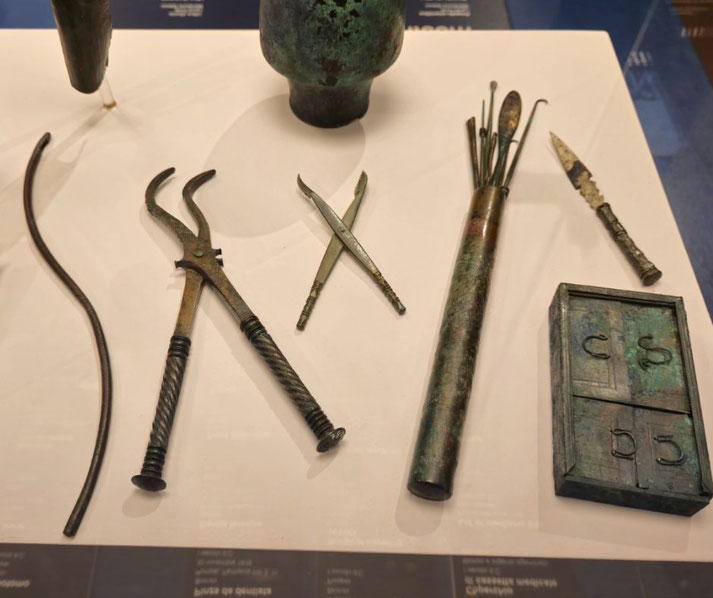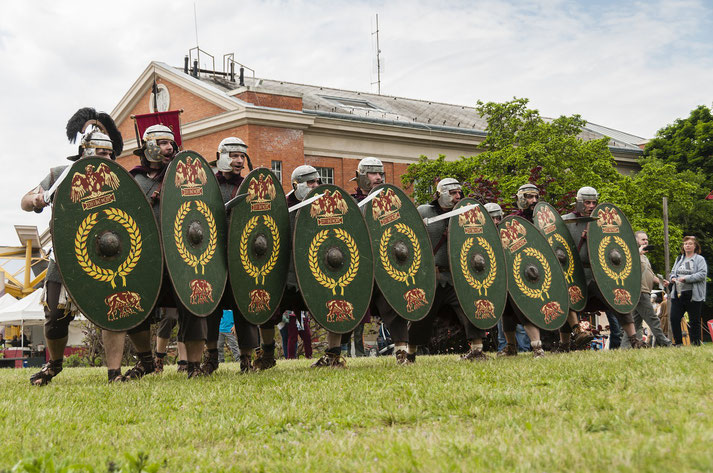9 things you never knew about the Roman army

The Roman army was one of the most powerful military forces in history. However, there are many things about the Roman army that are not widely known, even among history fans.
Here are 9 things you never knew about the Roman army:
1. It was multicultural
Contrary to popular belief, the Roman army was not made up entirely of Romans. In fact, it was one of the most diverse armies in history.
The Roman Empire spanned a huge area, and soldiers from all over the empire joined the army.
In the early days of the Roman Republic, legions were raised from the Roman citizenry, who were required to serve in the army.
However, as the empire expanded, the legions drew soldiers from provinces in Africa, Spain, Greece, Britain and other regions.
In some cases, soldiers were recruited from specific regions or ethnic groups. For example, the Numidian cavalry came from North Africa and the Batavi served from the area of modern-day Netherlands.
By doing so, the Roman army could make use of the different skills and strengths of soldiers from different regions.
Each legion was assigned a number and a name. These names often showed its place of origin or honoured its commander.
For example, Legio VII Gemina ('Twin Legion') was named after the fact that it was formed by combining two legions, while Legio X Fretensis ('Tenth Legion of the Strait') was named after the Strait of Messina, which separated Italy from Sicily.
2. It was a professional force
Unlike many armies of the time, the Roman army was a professional force. This meant that the soldiers were paid a regular salary and were trained to fight as a unified unit.
This made the Roman army one of the most effective fighting forces in history.
The length of their service varied over time, but in general, legionaries were expected to serve for at least 20 years.
Legionaries underwent strict physical and mental training to prepare them for the challenges of military life.
In fact, new recruits trained in a special military camp where they would learn the basics of military life.
They would be trained to march in formation, follow orders, use weapons such as swords, shields and javelins, and build and dismantle defensive walls and siege engines.
They also underwent physical training to develop their strength, endurance, and agility.
After completing their basic training, the soldiers would join a legion and undergo further training with their unit.
This included learning specific tactics and techniques that were unique to their legion.
3. It enforced a strict hierarchy
The Roman army had a clearly defined command structure, with the general at the top, foot soldiers at the bottom and many ranks in between, including centurions who commanded groups of soldiers.
Some of the ranks and roles include the following:
Legatus
A general who commanded a legion. They were appointed by the emperor or a high-ranking official.
Centurion
A professional officer who commanded a century, a unit of approximately 80 soldiers. Centurions were known for their discipline and bravery.
Signifer
A soldier who carried a standard, or signum, representing the legion.
Miles
A regular soldier who made up the bulk of the Roman army. They were trained to fight in close combat with weapons such as swords and spears.
4. Its discipline could kill you (literally)
The Roman army was well known for its strict discipline, and it may have actually been a key part of its success.
Soldiers who broke the rules could face harsh punishments such as being beaten, forced to carry heavy weights or even execution.
Specifically, here are some of the most famous punishments soldiers received:
Fustuarium - This was a punishment in which the offender was beaten to death by their fellow soldiers. The offender would be hit with sticks or stones by other soldiers until they died or managed to escape, which they were sometimes given a chance to. If they managed to flee, they were then exiled from the army and Rome. This punishment was used for serious offences such as desertion, mutiny, or cowardice in battle.
Decimation - This was a punishment where one in ten soldiers in a unit was randomly selected to be executed by their fellow soldiers. This was used rarely and tended to be for large scale mutiny or cowardice in battle.
Whipping - This was a common punishment for minor offences such as insubordination or disobedience. The offender would be stripped to the waist and whipped with a whip made of leather cords.
5. It was really well-equipped
The soldiers of the Roman army were expected to carry a wide array of different equipment with them, which was necessary for their survival and success on the battlefield.
It included armour, shields, weapons, backpacks, tunics, sandals, tools, water containers, and pouches.
In particular, armour was crucial for Roman soldiers because it provided protection from enemy weapons.
A typical set of armour for early Republic soldiers consisted of a helmet, a breastplate, and greaves (leg armour).
These were designed to be both protective and lightweight so that it could allow soldiers to move quickly and easily on the battlefield.
Roman soldiers carried a large, rectangular shield called a scutum. It was made of layers of wood and covered with leather or metal.
The scutum provided excellent protection from enemy weapons and could also be used as a last-ditch weapon in close combat when required.
The primary weapon of the Roman soldier was the pilum, a type of javelin that was designed to pierce enemy shields and armour.
In addition, soldiers also carried a short sword called a gladius, which was primarily used for close combat.
The combination of the pilum and the gladius gave Roman soldiers an advantage in both long-range and close-range combat.
Soldiers carried a leather or canvas backpack called a sarcina which contained their personal belongings, food rations, and other essentials.
6. It had its own medical corps
The Roman army had a medical corps that was responsible for treating wounded soldiers and included surgeons who could perform amputations and other surgical procedures.
Thanks to findings at several archaeological digs, experts gained valuable insights into Roman medical practices.
In particular, several medical tools have been discovered that were used by Roman military doctors to treat injuries and illnesses.
These include surgical instruments, medicine bottles, bandages, prosthetics, dental tools, and medical texts.

7. It could draw on a variety of tactics when needed
The Roman army used a variety of tactics that changed with the situation. For instance, they could fight in tight formations, such as the famous testudo (tortoise) formation, which protected soldiers from arrows and other missiles.
They could also employ cavalry and siege engines to break down walls and fortifications.
For example, at the Battle of Alesia in 52 BC, the Roman army was facing a large force of Gauls who were defending the hilltop fortress of Alesia.
The Roman general Julius Caesar built a double wall around the fortress and used his troops to prevent the Gauls from escaping.
The Romans were ultimately victorious, as the Gauls were unable to break through the walls or escape.

8. Soldiers were also engineers
The Roman army was involved in engineering. For example, they built roads, aqueducts, and other structures that were necessary for the empire's growth.
They also carried out military engineering, such as building siege weapons and bridges.
Specifically, road building was essential to their strategy because the army needed to move quickly and efficiently across its vast empire. These roads needed to withstand heavy traffic and bad weather.
In addition, legionaries were responsible for building camps to house and protect soldiers during military campaigns.
These camps were built according to a set design that included defensive walls, gates, and watchtowers.
9. Its influence still continues 2000 years later
The Roman army had a strong impact on Western civilisation in law, politics, and culture rather than just in military tactics and organisation.
Specifically, its organisational structure, military tactics, training programmes, engineering expertise, and leadership traditions significantly influenced how wars were fought and won in later periods, and its ongoing influence can still be seen in modern military organisations.
What do you need help with?
Download ready-to-use digital learning resources
Copyright © History Skills 2014-2025.
Contact via email
With the exception of links to external sites, some historical sources and extracts from specific publications, all content on this website is copyrighted by History Skills. This content may not be copied, republished or redistributed without written permission from the website creator. Please use the Contact page to obtain relevant permission.





